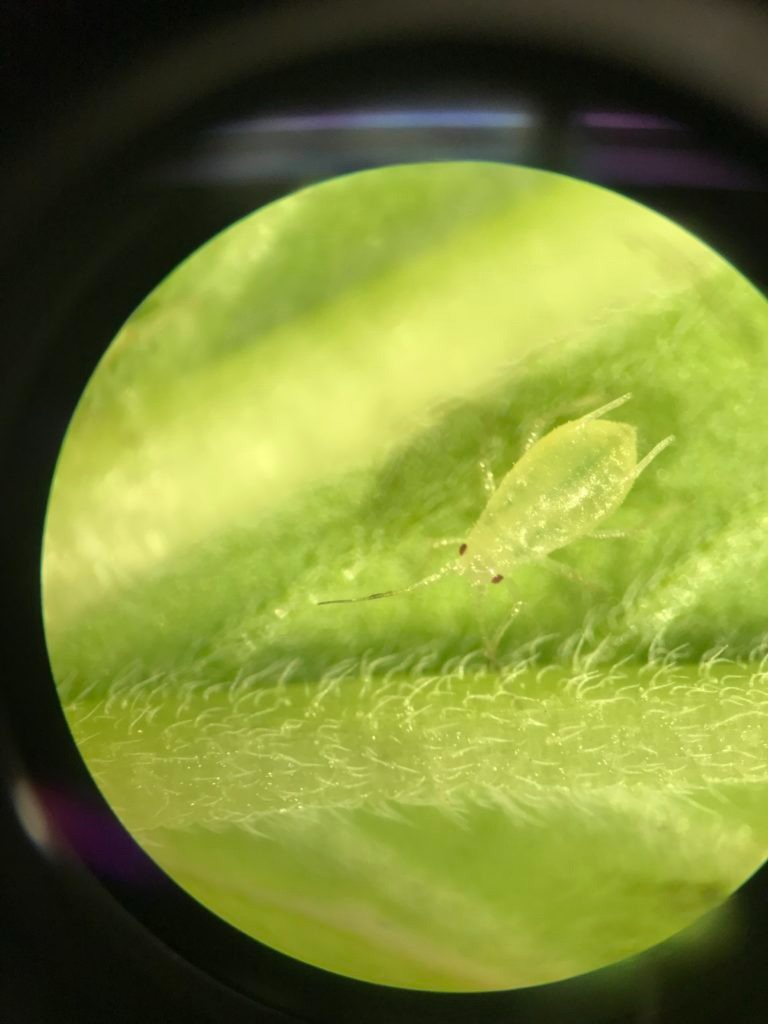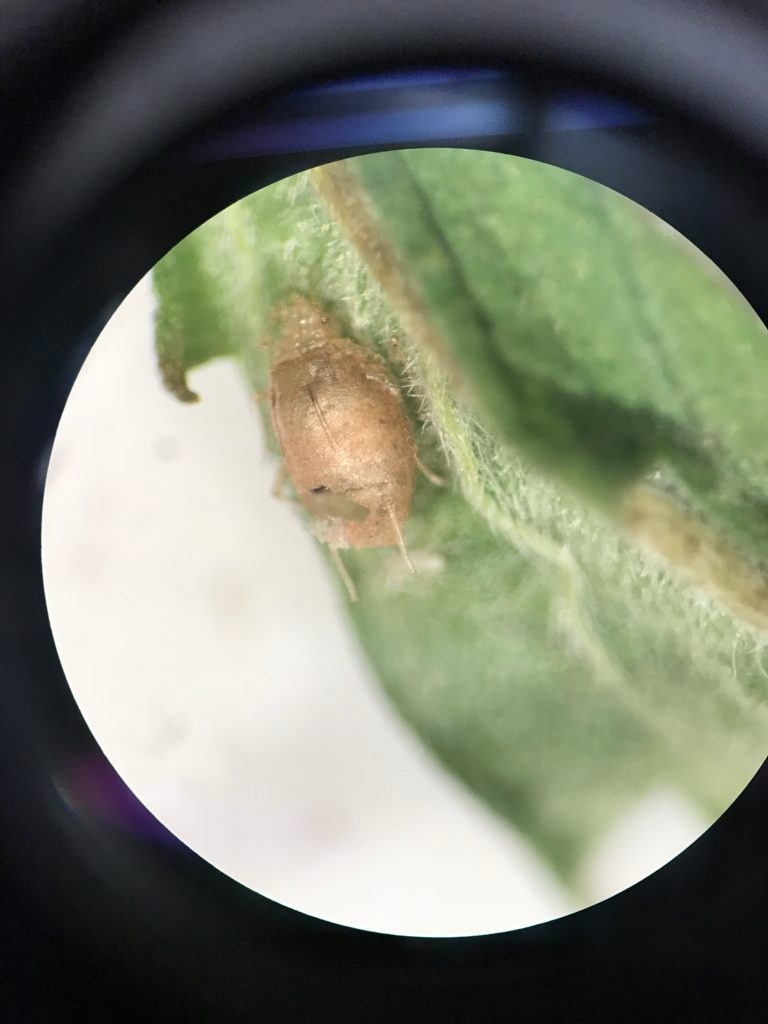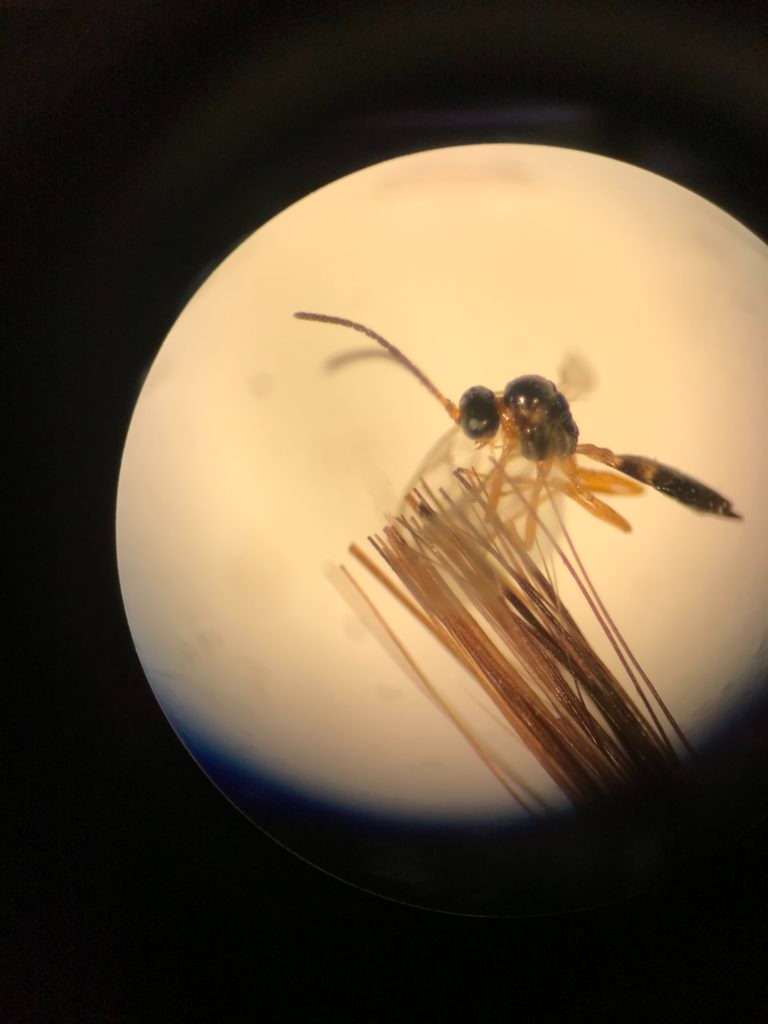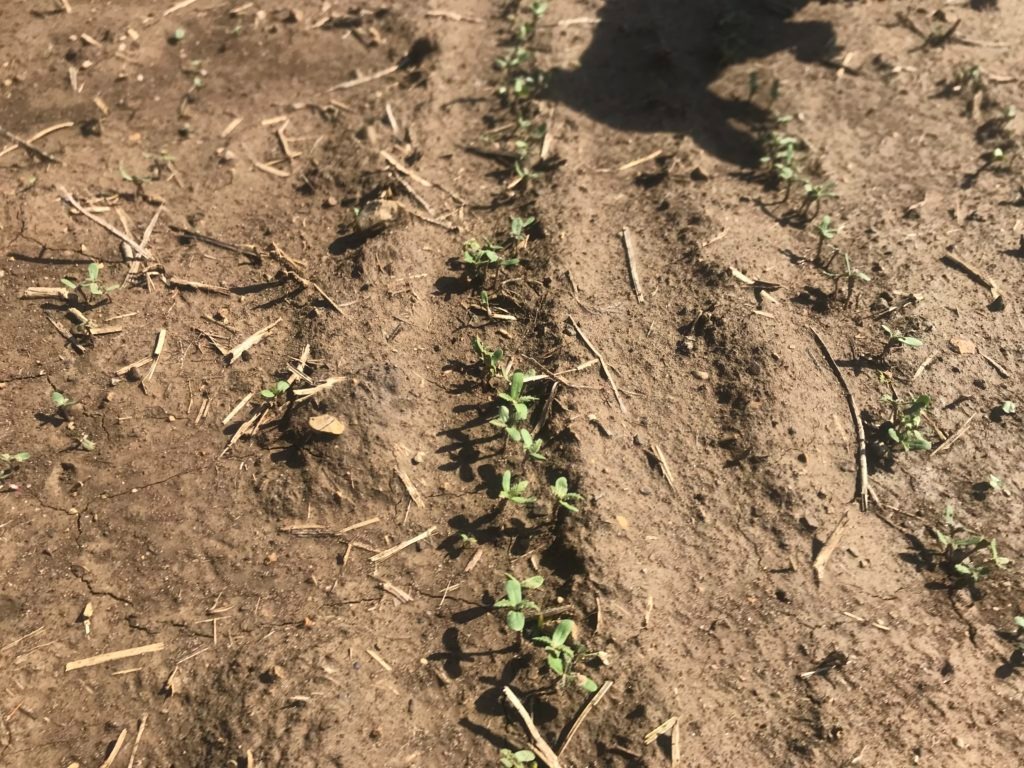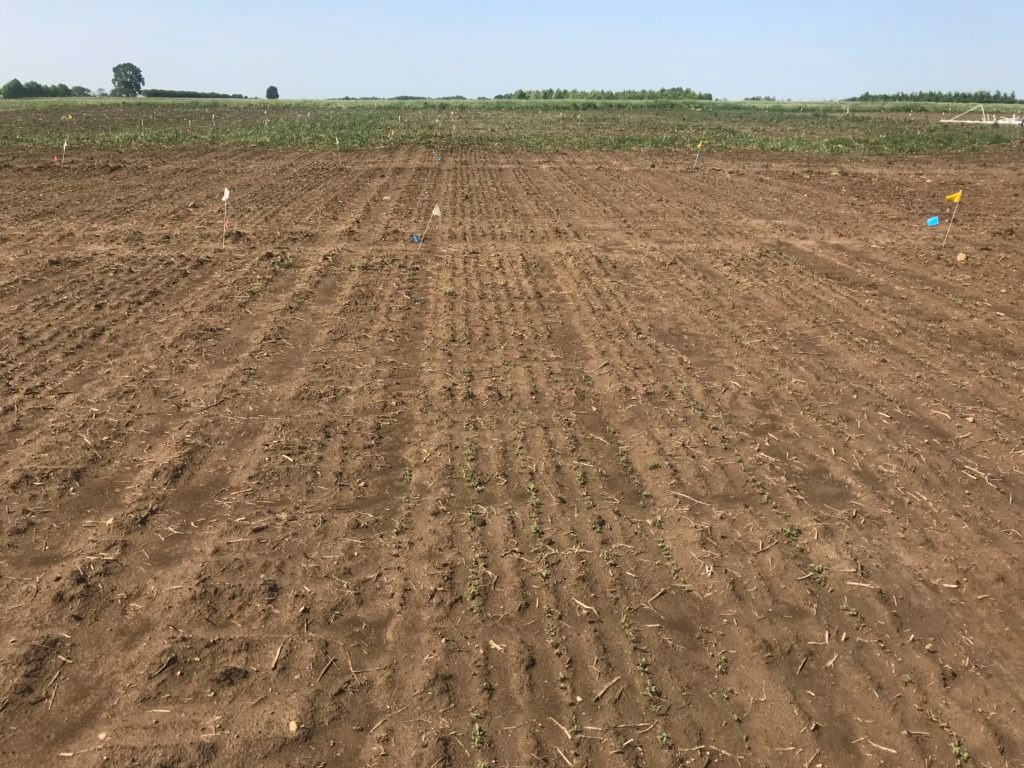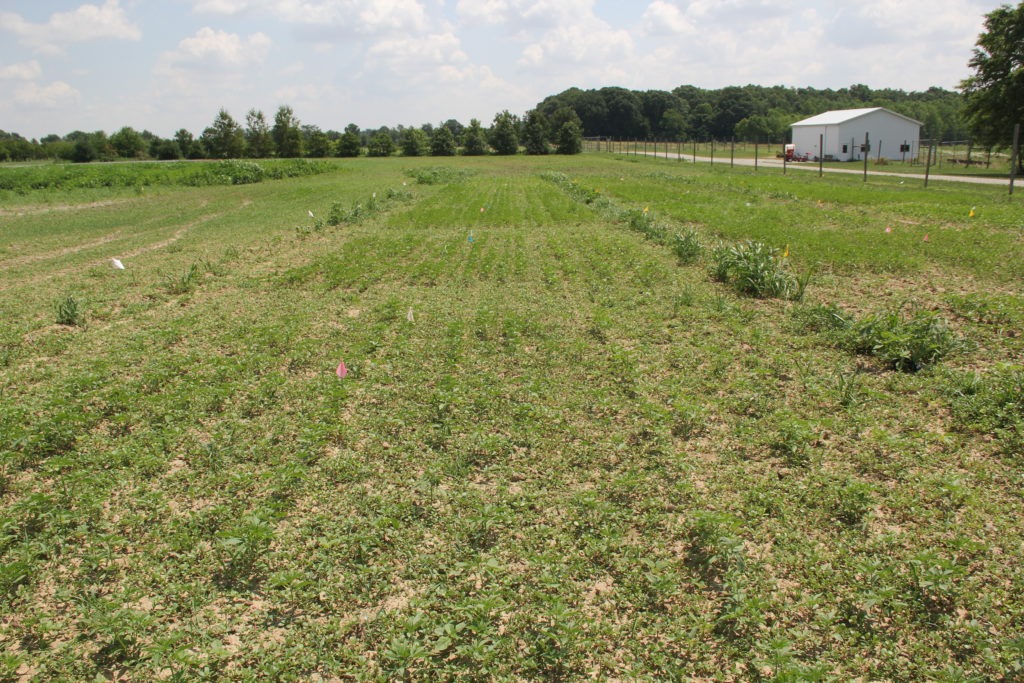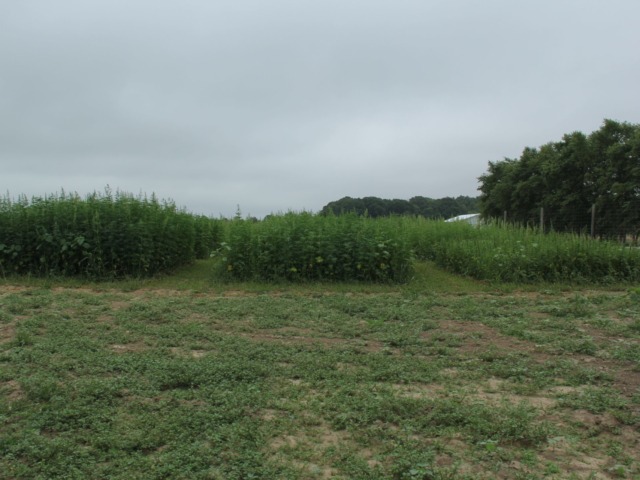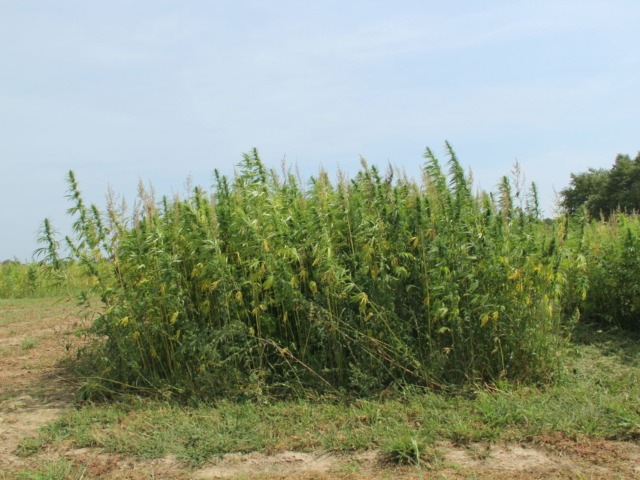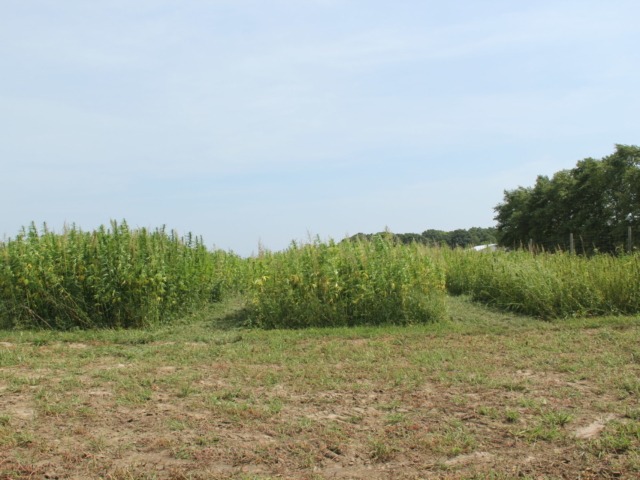RESEARCH 2019
May 15, 2019-Planting
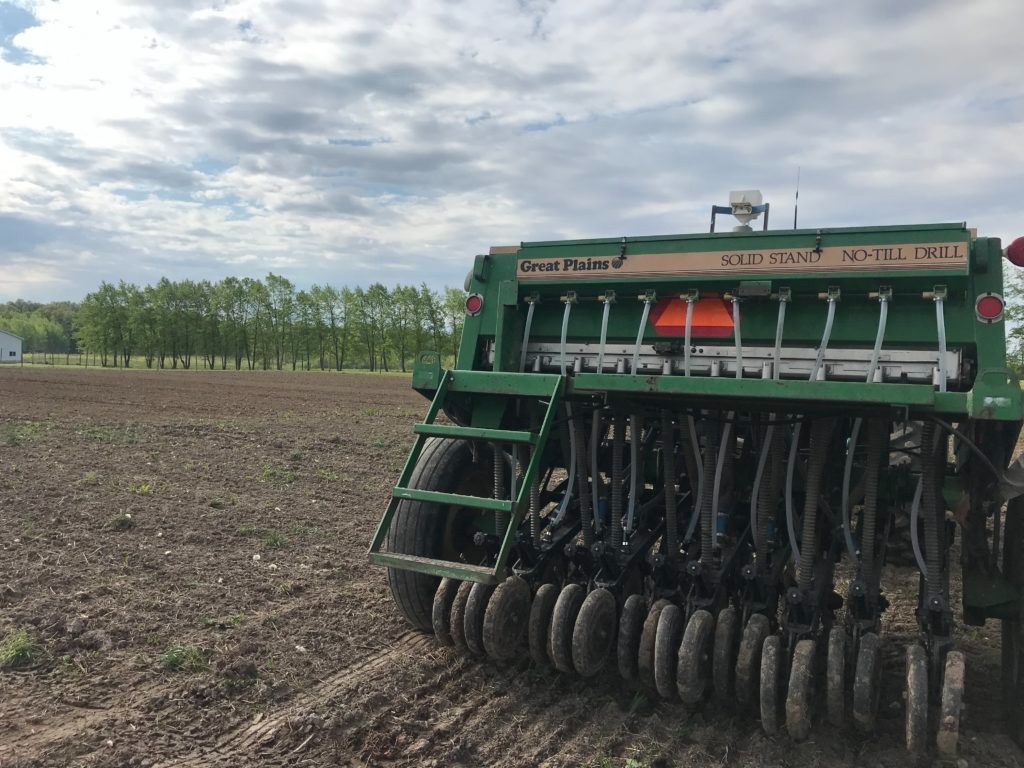 A no-till drill (Great Plains) was used to plant hemp into a firm seedbed.
A no-till drill (Great Plains) was used to plant hemp into a firm seedbed. 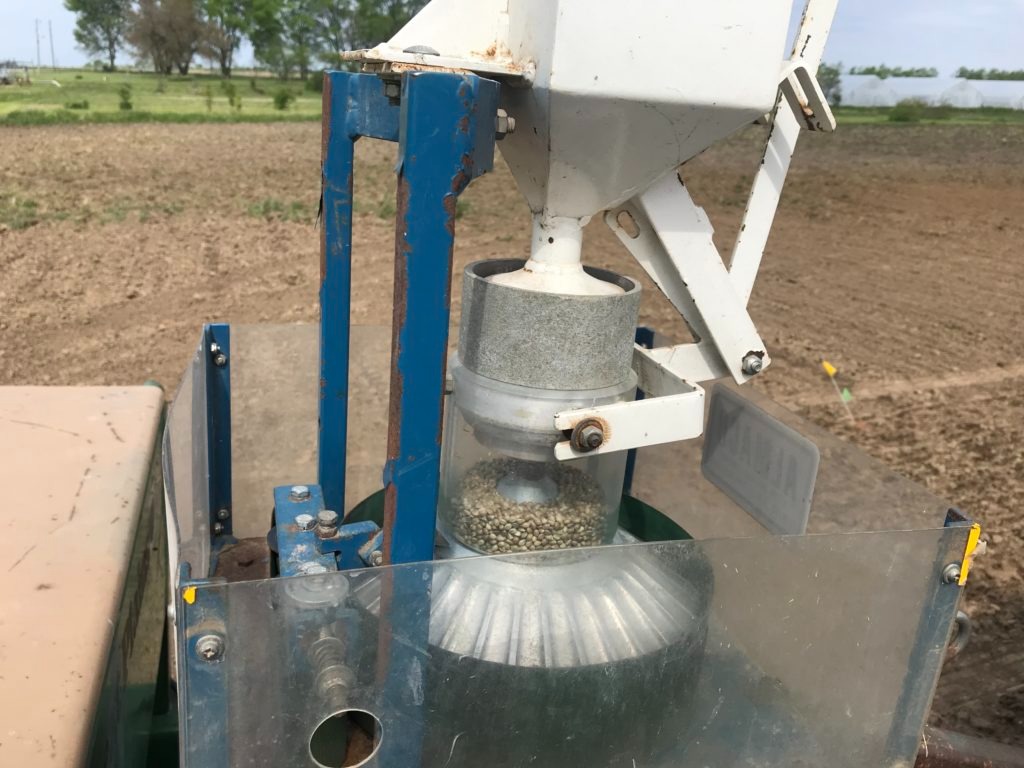 The cone planter is used for small plot research.
The cone planter is used for small plot research.  Hemp was direct seeded on May 15th but volunteer hemp plants germinated much earlier in the spring. These were seeds dropped by the 2018 hemp crop.
Hemp was direct seeded on May 15th but volunteer hemp plants germinated much earlier in the spring. These were seeds dropped by the 2018 hemp crop. May 22, 2019–Heavy rain and compaction delayed or prevented germination in some plots.
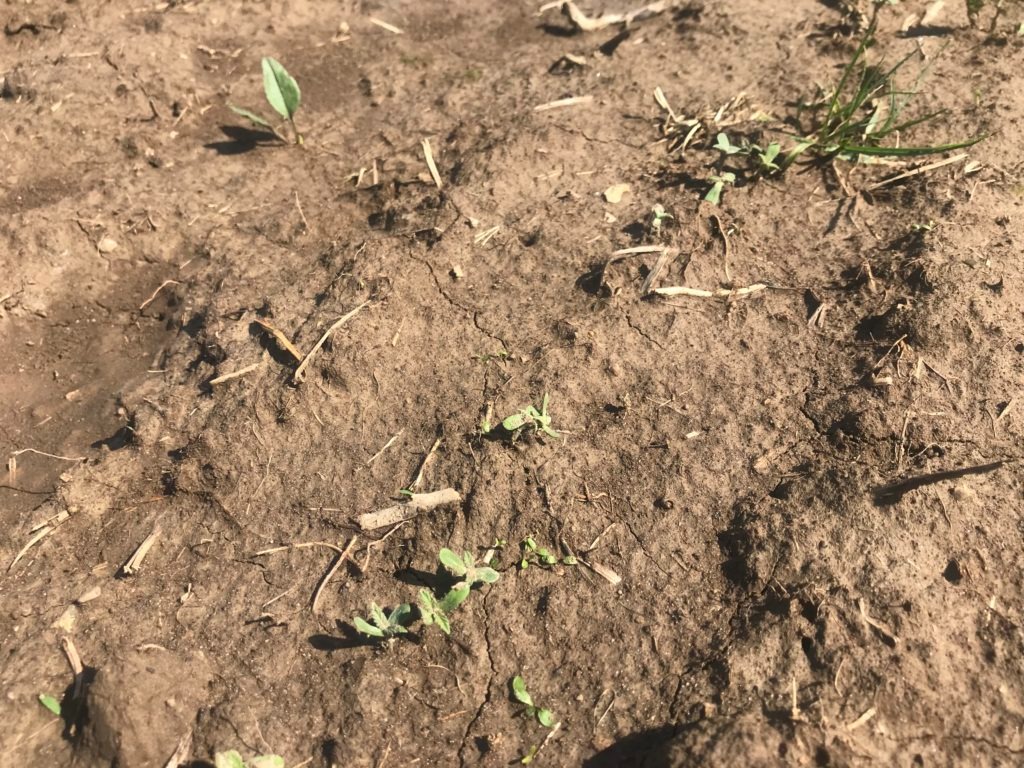 Hemp seeds are sensitive to excess rain and soil compaction. This often leads to areas where there are no seedlings or blank areas within the rows.
Hemp seeds are sensitive to excess rain and soil compaction. This often leads to areas where there are no seedlings or blank areas within the rows. July 2, 2019-Some of the hemp research plots had to be replanted on June 15th. The weed pressure resulted in a lot of manual removal of weeds
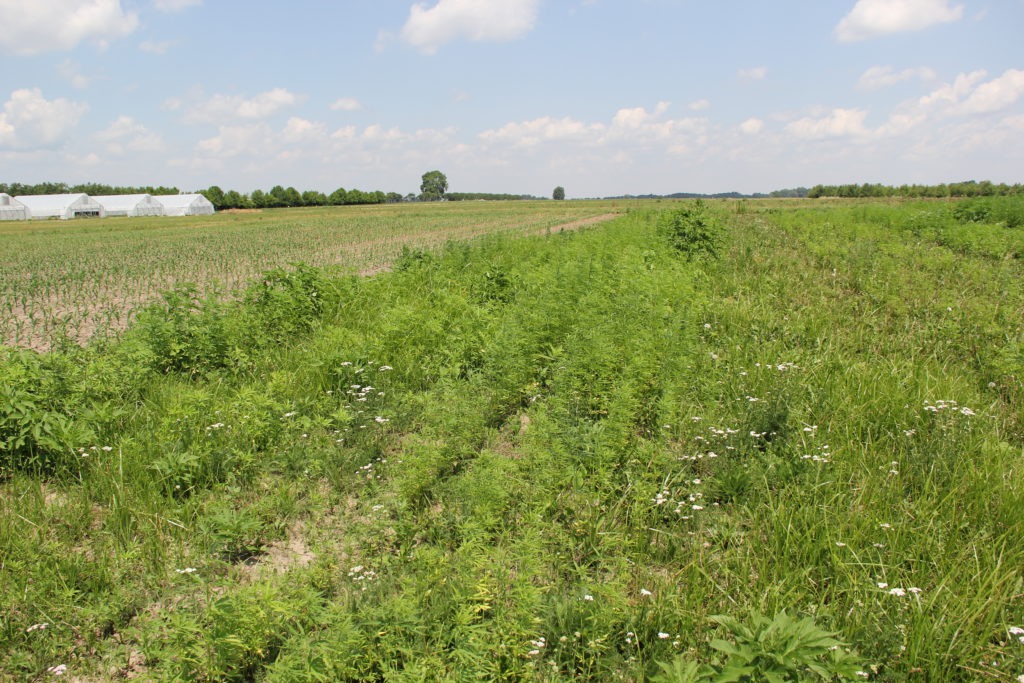 Weed control is especially challenging without registered herbicides for use in hemp fields. Mechanical cultivation may be an option depending on plant row spacing. These plots had excessive weed pressure and resulted in poor stand establishment in plots within the poorly drained portion of the field.
Weed control is especially challenging without registered herbicides for use in hemp fields. Mechanical cultivation may be an option depending on plant row spacing. These plots had excessive weed pressure and resulted in poor stand establishment in plots within the poorly drained portion of the field. 
